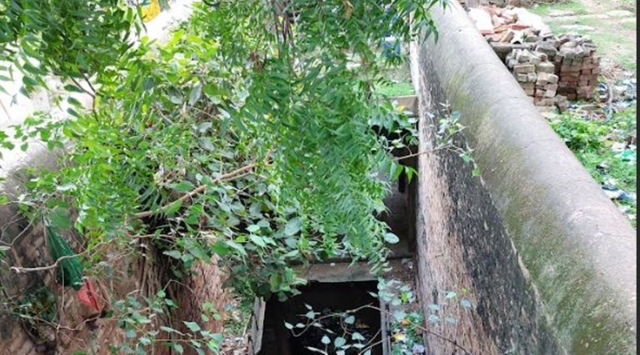REVIVAL OF STEPWELLS, BOREWELLS

Disclaimer: Copyright infringement not intended.
Context
A pilot project initiated under the Atal Mission for Rejuvenation and Urban Transformation (AMRUT) 2.0 in India.
Details
- Under the Atal Mission for Rejuvenation and Urban Transformation (AMRUT) 2.0, a unique pilot project is underway to revive defunct borewells, neglected heritage stepwells, and shallow aquifers.
- The project aims to recharge groundwater and mitigate flooding in 10 selected cities across India.
Purpose and Selection of Cities
- The project is initiated by the Union Ministry of Housing and Urban Affairs, which runs AMRUT 2.0.
- The selected cities include Jaipur, Gwalior, Dhanbad, Kolkata, Rajkot, Thane, Pune, Hyderabad, Bengaluru, and Chennai.
- Cities were chosen based on their historical dependence on shallow aquifer systems and their interest in implementing the project.
Groundwater Depletion and Recharging
- About 40% of India's water supply comes from groundwater, which is rapidly depleting.
- The project aims to recharge the groundwater to address water scarcity and flooding issues.
- Shallow aquifers ranging from 3 to 5 meters in depth are targeted for faster and energy-efficient recharging.
Implementation and Monitoring
- Technical partners for the project include the National Institute of Urban Affairs (NIUA), ACWADAM, and Biome Environmental Solutions.
- Sensors will be installed to measure groundwater levels before and after interventions.
- Each city will receive Rs 20 lakh for the project, with five locations selected for implementation.
- Tripartite agreements between the city, NIUA, and local partner agencies are being signed, followed by tendering.
City-Specific Projects
- Each city has specific interventions planned as part of the project.
- Examples include reviving the Mohammadwadi stepwell and stabilizing Dhayari Pond's banks in Pune, restoring heritage wells in Bengaluru, repairing stepwells in Jaipur and Gwalior, and constructing rainwater harvesting systems and recharge pits.
Objectives and Heritage Conservation
- The project aims to improve groundwater levels, sensitize urban local bodies, and demonstrate different interventions for groundwater improvement.
- It seeks to revive forgotten heritage stepwells, borewells, and water bodies, utilizing inherited resources of the cities.
- NIUA director Hitesh Vaidya highlights the project's innovative approach to reviving and conserving heritage water resources.
About Stepwells and Borewells
Stepwells
- Stepwells, also known as baoris or vavs, are unique architectural structures found primarily in India.
- They were traditionally built to provide access to groundwater and serve as a source of water for communities, especially during dry seasons.
- Stepwells are characterized by a series of steps or flights of stairs that lead down to the water level.
- They often feature elaborate and intricate architectural designs, with carvings, sculptures, and decorative elements.
Purpose and Functionality
- Stepwells were designed to harvest rainwater and store it in underground reservoirs.
- The steps provided access to the water source, allowing people to descend to collect water for various purposes, including drinking, bathing, and irrigation.
- The design of stepwells also allowed for cooling and ventilation, making them popular gathering places and retreats during hot summers.
Historical Significance and Cultural Heritage
- Stepwells have a rich historical and cultural significance in India, dating back to ancient times.
- They were not only utilitarian structures but also served as centers of social and religious activities.
- Many stepwells were built by rulers, wealthy individuals, or communities as acts of philanthropy and to gain spiritual merit.
Borewells
- Borewells, also known as tube wells or groundwater wells, are narrow, deep wells drilled into the ground to access underground water resources.
- Borewells are commonly used in areas where groundwater is the primary source of water supply.
Purpose and Functionality
- The main purpose of borewells is to extract groundwater for various uses, including domestic, agricultural, and industrial purposes.
- A borewell consists of a pipe, typically made of PVC or steel, which is inserted into the drilled hole to extract water.
- Borewells are equipped with submersible pumps or hand pumps to draw water from the underground aquifers.
Contemporary Usage and Challenges
- Borewells have become an essential source of water in many areas with inadequate surface water resources.
- However, unregulated drilling and excessive extraction of groundwater from borewells can lead to issues such as depletion of aquifers and saltwater intrusion.
- Over-dependence on borewells without sustainable groundwater management practices can result in the drying up of wells and a decline in water availability.
Importance of Sustainable Water Management
- Balancing the use of stepwells, which promote groundwater recharge, with the sustainable use of borewells is crucial for long-term water security.
- Adopting measures like rainwater harvesting, groundwater recharge techniques, and efficient water management practices can help maintain a sustainable water supply.
About Atal Mission for Rejuvenation and Urban Transformation (AMRUT) 2.0
Objectives
- Provide universal coverage of water supply through functional taps to all households in all the statutory towns in the country.
- Provide 100% coverage of sewage/septage management in 500 cities covered in the first phase of the AMRUT scheme.
- Improve the quality of life in urban areas by making them more livable, sustainable, and resilient.
Key features
- The scheme is being implemented in a demand-driven manner, with the cities identifying their own priorities and projects.
- The scheme is being implemented in a decentralized manner, with the states and cities having a greater role in implementation.
- The scheme is being implemented in a transparent and accountable manner, with all projects being monitored and evaluated.
Funding
- The total indicative outlay for AMRUT 2.0 is ₹2,99,000 crore, including Central outlay of ₹76,760 crore for five years.
- The Central government will provide 50% of the funding, while the states and cities will provide the remaining 50%.
Timeline
- The scheme will be implemented from 2021-22 to 2025-26.
Benefits
- AMRUT 2.0 will benefit millions of people living in urban areas by providing them with access to clean water and sanitation.
- The scheme will also help to improve the quality of life in urban areas by making them more livable, sustainable, and resilient.
|
PRACTICE QUESTION Q) Explain the significance of stepwells and the challenges associated with borewells in the context of water resource management in India. Discuss the measures that can be taken to promote sustainable water usage and conservation. (250 words) |
https://indianexpress.com/article/india/focus-on-flooding-and-groundwater-govt-plans-to-revive-stepwells-borewells-8840531/





1.png)
